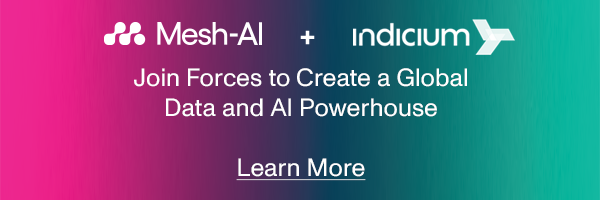


For every $10 that you invest in technology and tools as a business, you need to invest $90 in the people using that tech to get the most out of it. This is the 10/90 rule, coined back in 2006 by Avinash Kaushik, Chief Strategy Officer at Human Made Machine and a bestselling author on web analytics.
It’s a high target, and very few organisations claim to have achieved it, but his central point was less about the specific numbers and more the idea that measurable success for any technology initiative comes not from the technology itself, but from the people using it. Indeed, a 2016 study by CEB (now part of Gartner) found brands with high-performing marketing divisions were seven times more likely to identify people, over technology or strategy, as enablers of effective marketing.
This principle is just as critical when it comes to AI. While businesses are betting big on AI solutions to help them achieve their strategic goals, they also need to help their teams understand how to use these tools effectively, safely and confidently.
If they don’t, they risk costly mistakes resulting from overreliance on unvalidated AI outputs, reputational and financial penalties from mishandled data, and poor ROI from AI solutions that employees fail to embrace.
With many organisations focused on AI technology, the real competitive advantage may well fall to those who also adopt AI literacy programs to help plug the gaps in their workforce’s knowledge.
It’s a common misconception that only the people building the technology - the AI engineers and data scientists - need to know about AI. This viewpoint reduces AI transformation to a technology issue and overlooks the input needed from other people across the business - from C-suite leaders who sign off on AI strategy, to staff on the ground who will be using these tools day-to-day.
While others in the business certainly don’t need the depth of knowledge that the engineers and scientists have, a baseline understanding of AI helps them to fulfil their role more effectively. This baseline knowledge across an organisation, combined with an iterative test-and-learn approach to AI, can really help to drive widespread adoption of any AI solutions.
Mesh-AI recently put this approach into action when working with a large highly regulated financial services organisation. Their desire to better understand the possibilities of AI in the finance sector laid the groundwork for an initiative that uses AI to automate content curation, giving employees on the ground faster access to the information they need to make decisions.
Not only did developing this product iteratively allow engineers and scientists to develop their AI toolkits, it gave everyone else in the organisation a greater awareness and appreciation of the role and limitations of AI in this field. With the initiative now in production, this baseline understanding of AI across all levels of the organisational hierarchy is helping to build support and drive adoption.

For these less technical roles, the most critical AI knowledge they can develop is around limitations: what AI can do and – crucially – what it can’t. For business leaders, knowledge of the sorts of tasks that AI excels at and those that it still struggles with is essential for evaluating which AI initiatives to pursue to drive meaningful success.
For those using AI tools daily, meanwhile, knowing the capabilities and limits of these tools allows employees to make better judgements on how these tools can assist them with their day-to-day tasks and how much confidence to place in their outputs.
It’s also important to remember that across your workforce there will be people with widely varying pre-existing attitudes towards AI; some will be more sceptical of its capabilities and fearful about how it impacts their role, while others will be more tech-savvy and proactive in seeking out use cases for AI. Acknowledging these diverse attitudes is an important part of AI literacy, and a program that demonstrates empathy for these groups of people will ultimately benefit everyone in different ways.

A comprehensive AI Literacy program should enable your workforce to acquire a high-level understanding of how AI works, and equip them to use AI tools effectively, safely and confidently. To do this, we recommend focusing on four workstreams:

Within these workstreams, we’ve identified a number of core topics that should be covered. While we believe that business leaders need some degree of AI literacy upskilling to inform strategic thinking around AI, they don’t necessarily need to delve as deeply into some of these topics as other members of the workforce who are closer to implementation and usage.
Equipping your workforce with the skills to understand AI and use it effectively, safely and with confidence is vital to keeping your business on the cutting edge and maximise ROI from AI initiatives. The AI Literacy program above provides more than just technical knowledge; it empowers people to think critically, work responsibly with AI and understand their role in the rapidly evolving AI landscape.
Of course, AI Literacy is just a step along the path to AI adoption for organisations. At Mesh-AI we believe in a test-and-learn approach to AI that emphasises rapid prototyping, learning fast and building confidence with end users, and we’ve put this into practice with major financial organisations in areas such as automated content curation and underwriting processes.
If you're ready to empower your workforce and maximise the value of AI in your organisation, we’d love to hear from you. Reach out to us at hello@mesh-ai.com, and let’s start the conversation.
